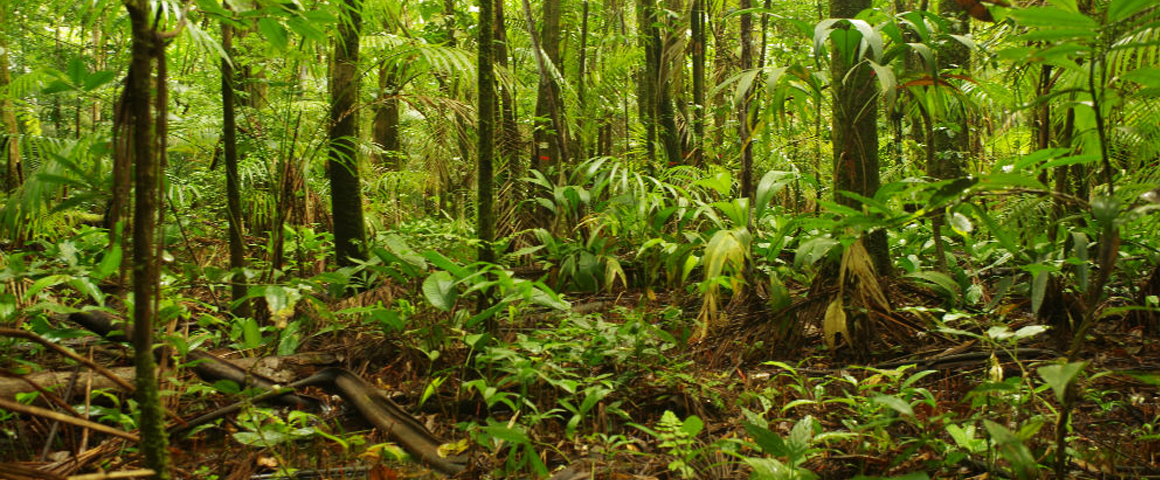Results & impact 10 October 2025
- Home
- Press area
- Press releases
- Forest biodiversity : huge carbon capture potential
Diverse forests have huge potential to capture carbon, provided we cut emissions

Forest inventory plot at the Paracou site in French Guiana © A. Dourdain, CIRAD
The study, which involved hundreds of scientists including four from CIRAD, made use of the world's largest forest inventory database, combined with satellite information.
It showed that:
- Forests have the potential to capture 226 gigatonnes (Gt) of carbon in areas where they would naturally exist.
- That forest potential can only be achieved if we reduce emissions.
- 61% of forest potential could be achieved by protecting existing forests and allowing them to grow to maturity.
- The remaining 39% could be achieved by reconnecting fragmented landscapes, by means of restoration and forest management.
- A natural diversity of species is vital to maximize forest carbon potential.
Achieving the above results means working to conserve and restore forest biodiversity.
Fulfilling the carbon capture potential of forests
"The figure of 226 Gt corresponds to what the world's forests as a whole could capture, were we to leave them to recover freely, on zones that are often on the fringes of large tropical forests, which are no longer used for farming and are totally non-urbanized", says Bruno Hérault, a forest ecology researcher at CIRAD. "Some 61% of that potential could be achieved by protecting existing forests, to allow them to grow to full maturity. The remaining 39% could be achieved by reconnecting fragmented landscapes, by means of sustainable landscape management and restoration."
The range of data gathered also showed that biodiversity accounts for around half the productivity of the world's forests. To achieve the full forest carbon storage potential, restoration efforts should include a natural diversity of species. Furthermore, sustainable farming, silviculture and restoration practices that foster biodiversity have the largest carbon capture potential.
Clarifying what "restoration" means
The authors stress that responsible restoration is a fundamentally social undertaking. It includes a range of activities such as conservation, natural regeneration, silviculture, agroforestry and all the other efforts made by local communities to foster biodiversity through farming practices. It calls for equitable development, led by policies that prioritize the rights of local communities and local people.
"Forest landscape restoration should aim to restore the environmental functions of landscapes (soils, biodiversity, water regimes, climate effects, etc), but should also take account of local people's living conditions. It is therefore vital to consider the major production functions of forest ecosystems, which generate both jobs and income for those people", Plinio Sist, Head of CIRAD's Forests and Societies unit, says.
"We need to redefine what restoration means to many people", says Thomas Crowther, the article's lead author and professor at ETH Zürich. "Restoration is not about mass tree plantations to offset carbon emissions."
Thus study recalled the importance of natural, diverse forests, which contribute to 30% of carbon capture potential. However, forests cannot replace reductions in emissions from fossil fuels. If emissions continue to rise, the scientists warn, droughts, fires and climate heating will threaten forests and limit their capacity to capture carbon.
Reference
Mo L, Zohner CM, Reich PB, et al. Integrated global assessment of the natural forest carbon potential. Nature.



























